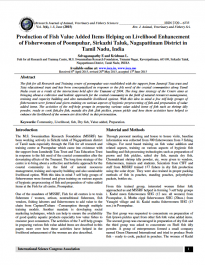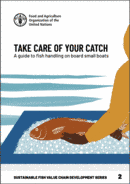Markets for Artisanal Fish Product Storage
There are several links between storage, markets and food loss and waste (FLW) prevention and reduction:
- Wholesale and retail market infrastructure should cater for the needs of processors and traders by providing proper storage facilities that prevent and reduce FLW and effective management should maintain such services/facilities.
- Using the appropriate packaging of products during storage affords protection against pests, and assuming the product is dried correctly, against mold growth. For example, plastic packaging provides good protection against insect infestation and plastic boxes are used to protect dried fish from rodent attack. Packaging also enables products to be labelled and meet the standards required by high value markets. Thus, packaging can not only be used to protect products during storage, but also to add value and improve market access.
- Artisanal fish products with low moisture contents are associated with potentially long storage lives. This means that if storage conditions are good, product quality can be maintained, and wastage due to insect infestation addressed, then products can be sold according to market demand, enabling supply and demand fluctuations to be evened out over time.
- Access to certain markets, such as the EU, requires products to be free of insect infestation and mould growth. Aiming to supply markets which have stringent food safety requirements will encourage the use of good storage practices, automatically leading to actions which address the causes of FLW.
- Many artisanal processed fish products are important low value sources of protein and nutrients to less well-off consumers. Therefore, in terms of food security of vulnerable populations, making more products available and maintaining product quality, nutritional value and an affordable price is an important aspect of market access.
Key Publications
Value-addition and SME's: Raison D'etre and Lessons Learnt This document describes work undertaken in Africa to support small and medium-sized enterprises, and to reduce food waste losses, in regards to fish product. | |
Present and Future Markets for Fish and Fish Products from Small-Scale Fisheries This report identifies avenues for better integrating small-scale fisheries into regional and international fish trade, and suggests efforts be aimed at improving onboard fishing and storage facilities, and, among others, increasing awareness of hygiene. | |
Production of Fish Value Added Items Helping on Livelihood Enhancement for Fisherwomen Paper on a project that supported self-help groups of fisherwomen on hygienic pre-processing of fish and preparation of value added items. |
More Resources
More Resources
31 October 2023














